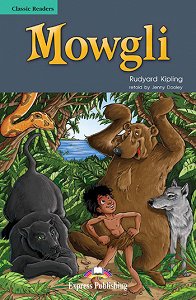When did you last read fiction? As our attention spans get shorter and shorter, classic works of literature can bring us back to a long-neglected habit; that of spending time with a book, uninterrupted. Choose a graded reader, give it to your students and help them rediscover the joy of staying focused.
Graded Readers: what do they include?
Graded readers are classic works of literature adapted for students of every age and level; each story is approached through pre-reading and post-reading tasks that aim at amplifying the students’ perspectives and exposing them to language structures without explicitly doing so. The books are enriched with illustrations, which help multi-modal learning and provide talking points and stimuli.
From Macbeth to Little Women, our readers’ catalogue covers every level and age. Find them here!
Graded readers are also a great way to cultivate longer attention spans. An average TikTok video lasts 15 seconds and so do Instagram stories—technology has rapidly changed our reading environment and, by large, it has changed the way we read. Deep and focused reading becomes a skill that needs to be honed—and literature becomes the best way to increase our attention span. Make sure that you specify the time students should devote to each task, break down the tasks or their reading into smaller chunks, minimise distractions around them. Lastly, bring in some memory games! They may not improve focus, but they offer an incentive to read carefully.
Below we propose some ideas on ways to incorporate readers in class.
Create a library
The books can form part of a school or class library. Give students time to mingle and flick through the books’ pages and then ask them to choose their read. Then, make a list of books on the wall with students’ names running across the top. Every student has to read a book a week, a certain number per term, or a minimum number over a specified period.
Ask for reviews
Asking your students to review the book they have read, is also a way to check whether they have actually read it. The reviews/recommendations can be in written form or presentations to the whole class. All the books are reused and can be kept for following classes, so stress that students are to take care of the books and not write or draw in them.
Tip: Provide boxes of different coloured adhesive stars. When a student reads a book, they rate it by sticking a star next to it, and under their name: gold for excellent, silver for very good and so on.
Ask for story predictions or alterations
After students have read the beginning of the book, have them predict the type of story.
They can also make predictions based on the cover. Another idea would be, for each chapter as well as towards the end, to write what they imagine will happen next. When they’ve finished the book, they can write alternative endings.
Finally, students can write the story from the perspective of another character. The latter would involve thinking about how the characters feel when they talk about any issues raised in the story or for example, why a character has good or bad traits.
Gone missing!
Take one or two characters out of the story and ask students to brainstorm on how the story changes as a result of their absence.
Shuffled chapter titles
Copy the chapters’ titles on pieces of paper and hand them out to students. Then, ask them to put them in order and create their own version of the story based on the titles and their succession!
Cinema posters
Tell students that their reader is going to be made into a film. Then, ask them to come up with the actors playing each role as well as create the movie poster that will advertise the film!
If we don’t learn to love books, we don’t read; and if we don’t read widely, we don’t think deeply.














